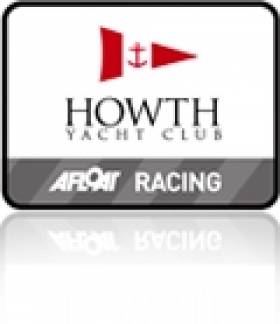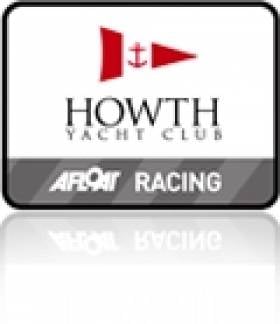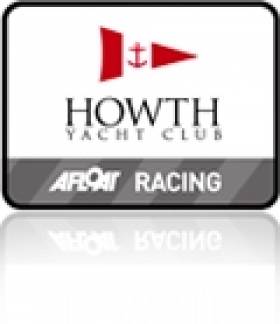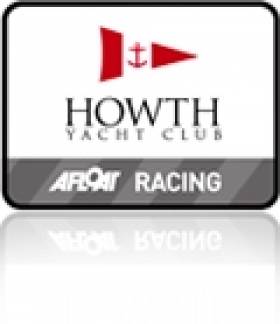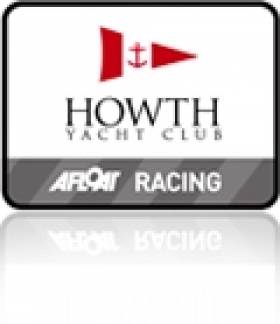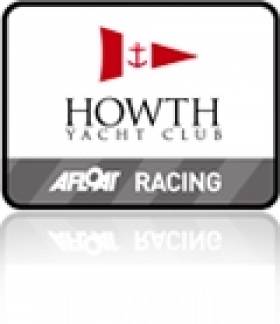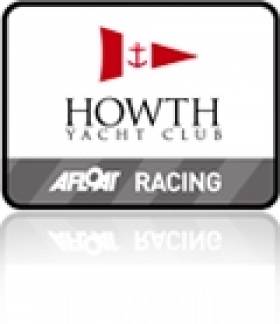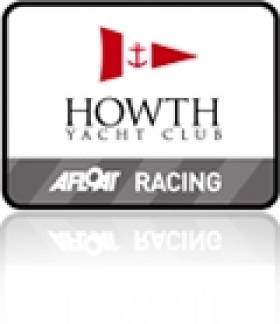Displaying items by tag: Howth YC
Storm Success in IRC 1 Howth
HOWTH YACHT CLUB. WEDNESDAY SERIES 3 (RACE) 25/08/2010 Class 1 IRC: 1, Storm P Kelly; 2, Tantrum 3 Klimche/O'Leary; 3, Makutu Doyle/Others; Class 1 HPH: 1, Storm P Kelly; 2, Tantrum 3 Klimche/O'Leary; 3, Makutu Doyle/Others; Class 2 IRC: 1, Sunburn I Byrne; 2, Superhero Burne/Banahan; 3, Toughnut D Skehan; Class 2 HPH: 1, Sunburn I Byrne; 2, Toughnut D Skehan; 3, Superhero Burne/Banahan; Class 3 IRC: 1, Checkmate J Faller; 2, Gecko K Darmody; 3, Sunchaser M Marr; Class 3 HPH: 1, Sunchaser M Marr; 2, Helly Hunter L McMurtry; 3, Midnight Sun Bolger/Others; White Sails HPH: 1, Sandpiper of Howth A Knowles; 2, Alphida H Byrne; 3, Bite the Bullet C Bermingham; White Sails IRC: 1, Alphida H Byrne; 2, Bite the Bullet C Bermingham; 3, Force Five R & J McAllister
Shadowfax Beats Puffin in Howth Squib Race
Irish Teams Third and Fifth in New York
After 3 very intense days of international competition at the Dennis Connor International Yacht Club Challenge, the Irish teams consisting of Royal Cork Yacht Club finished 3rd, Howth Yacht club finished 5th overall beating some very talented opposition including the two local Manhattan Yacht Club teams.
The event was sailed in a fleet of J24's and the RCYC boat was skippered by Stefan Hyde and the Howth Boat by Emma McDonald.
In fact if it was not for a penalty after a collision in race 4 (Under Regatta rules, if a collision occurs, both boats have to do turns no matter who is in the right / wrong) and the cancellation of race 7 on the last beat due to a approaching thunderstorm - podium positions for both teams could have beckoned.
The regatta was sailed in the very busy waters of the Hudson river in New York City which along with the challenges of avoiding commercial traffic, some of the strongest currents that the crew have ever experienced had to be negotiated in varied winds from 5knts on the opening day to 30knts plus during approaching thunderstorms on the final day. The 3rd Irish team; Wexford Harbour Yacht and Tennis Club finished in 10th place.
The event was won by the team from Switzerland - Societe Nautique Rolloise followed one point behind by USA - Southern Yacht Club and then a fantastic 3rd place by the Irish team from Royal Cork skippered by Stefan Hyde.
It is tradition on presentation night that each team presents to the team that finishes behind them in the final results a humourous prize.
4th place Austrian team presented the HYC team with "Lederhosen".
Howth Yacht Club also presented Commodore Michael Fortenbaugh of Manhattan Sailing Club and Dennis Connor (Americas Cup Hero) with HYC Burgees.
A fantastic event in a wonderful city that certainly promoted international goodwill through friendly competition.
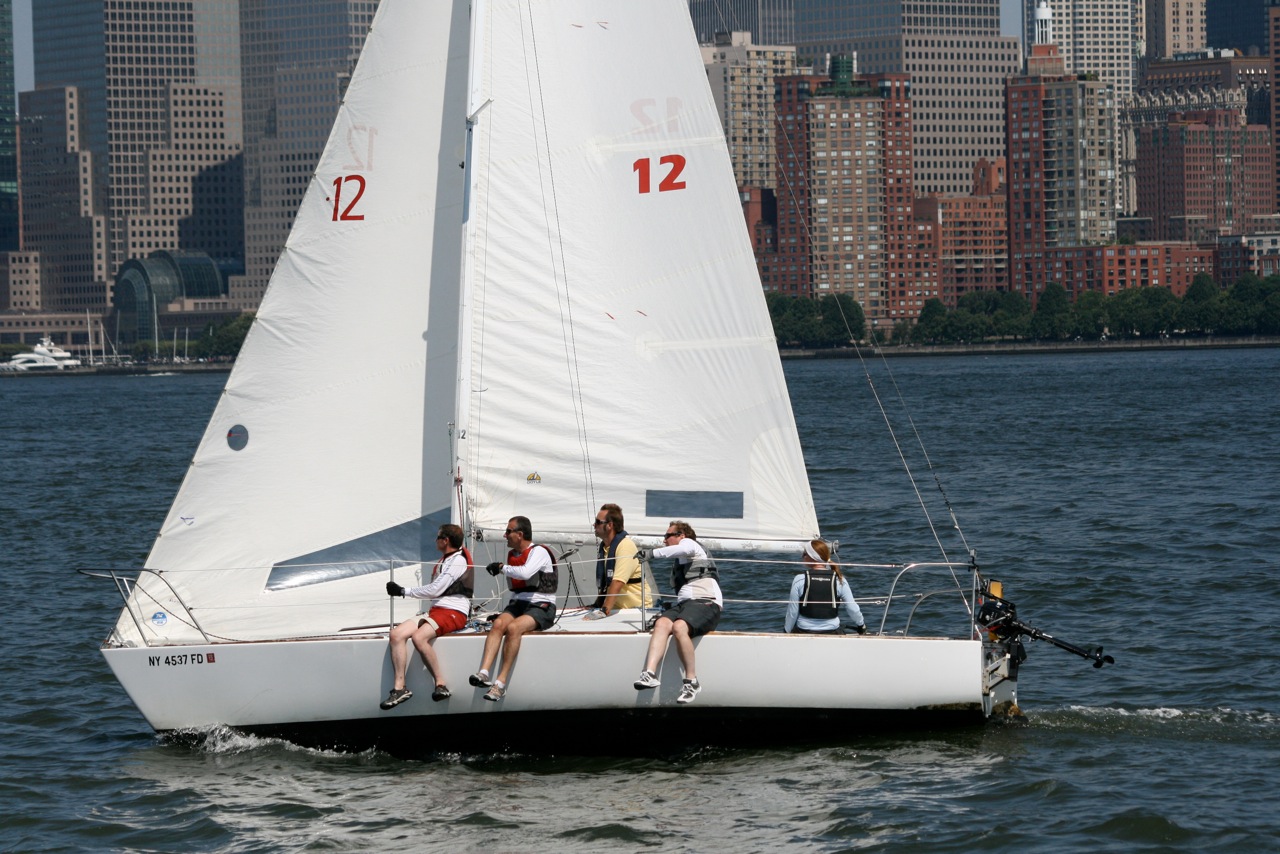



Crazy Horse Faster than Storm
HOWTH YACHT CLUB. WEDNESDAY SERIES 3 (RACE) 11/08/2010 Class 1 IRC: 1, Crazy Horse Reilly/Chambers; 2, Tiger Hughes/Harris; 3, Storm P Kelly; Class 1 HPH: 1, Trinculo M Fleming; 2, Crazy Horse Reilly/Chambers; 3, Joslim J Connolly; Class 2 IRC: 1, Superhero Burne/Banahan; 2, Dux A Gore-Grimes; 3, Sunburn I Byrne; Class 2 HPH: 1, Indigo Eadie/Ritchie; 2, Toughnut D Skehan; 3, Superhero Burne/Banahan; Class 3 IRC: 1, Alliance V Gaffney; 2, Starlet Bourke/Others; 3, Drumbeat F & F Magann; Class 3 HPH: 1, Starlet Bourke/Others; 2, Drumbeat F & F Magann; 3, Alliance V Gaffney; White Sails HPH: 1, Sandpiper of Howth A Knowles; 2, Brazen Hussey Barry/Stirling; 3, Alphida H Byrne; White Sails IRC: 1, Alphida H Byrne; 2, Bite the Bullet C Bermingham; 3, Brazen Hussey Barry/Stirling
Vintage Howth 17 Champs Get Underway This Evening
The Howth 17 National Championships takes place at Howth Yacht Club tomorrow. Racing commences this evening (Friday) at 7pm with a course selected from the East Pier race card and then on Saturday there will be a Windward / Leeward courses set.
'Crazy Horse' Romps Home in IRC 1
HOWTH YACHT CLUB. WEDNESDAY SERIES 3 (RACE) 04/08/2010 Class 1 IRC: 1, Crazy Horse Reilly/Chambers; 2, Tiger Hughes/Harris; 3, Equinox R McDonald; Class 1 HPH: 1, Trinculo M Fleming; 2, Crazy Horse Reilly/Chambers; 3, Tiger Hughes/Harris; Class 2 IRC: 1, Indigo Eadie/Ritchie; 2, Dux A Gore-Grimes; 3, Toughnut D Skehan; Class 2 HPH: 1, Indigo Eadie/Ritchie; 2, Toughnut D Skehan; 3, Sunburn I Byrne; Class 3 IRC: 1, Alliance V Gaffney; 2, Starlet Bourke/Others; 3, Gecko K Darmody; Class 3 HPH: 1, Rossinver C Scott; 2, Helly Hunter L McMurtry; 3, Drumbeat F & F Magann; White Sails HPH: 1, Sandpiper of Howth A Knowles; 2, Fanatix R Fanning; 3, Brazen Hussey Barry/Stirling; White Sails IRC: 1, Fanatix R Fanning; 2, Voyager J Carton; 3, Force Five R & J McAllister
America's Cup Legend Lines up for Howth Etchells Regatta
America's Cup legend John Bertrand is among 42 entries received for the Etchells World Championships coming to Howth Yacht Club later this month. A quarter of the fleet are Irish but entries are also coming from Australia, Bermuda, USA and Sweden. Bertrand and his crew are coming from Victoria in Australia. Bertrand skippered Australia II to victory in the 1983 America's Cup, ending 132 years of American supremacy. Bertrand won the bronze medal in the Finn competition at the 1976 Summer Olympics in Montreal. He is a member of Royal Brighton Yacht Club in Melbourne Australia, and currently competes in the Etchells class boats. The Howth entry list as at July 30th can be downloaded below.
Rita Beats Oona in HYC Seventeen's Race
HOWTH YACHT CLUB. TUE + SAT SERIES 3 (RACE) 03/08/2010 17 Footer SCRATCH: 1, Rita Lynch/Curley; 2, Aura I Malcolm; 3, Oona P Courtney; 17 Footer HCAP: 1, Aura I Malcolm; 2, Pauline O'Doherty/Ryan; 3, Rita Lynch/Curley TUESDAY SERIES 3 (RACE) 03/08/2010 Puppeteer SCRATCH: 1, Mojo Stanley/Callen; 2, Ibis G May; 3, Pinocchio Swan/Davidson; Puppeteer HPH: 1, Mr. Punch NiBhraonain/Wilson; 2, Pinocchio Swan/Davidson; 3, No Strings T Harvey; Squib SCRATCH: 1, Chatterbox J Kay; 2, Shadowfax P Merry; 3, Arctic Fox G Barry; Squib HPH: 1, Chatterbox J Kay; 2, Shadowfax P Merry; 3, Arctic Fox G Barry; Etchells SCRATCH: 1, Kootamundra Wattle O'Grady/Reilly; 2, Jabberwocky S Knowles; 3, Northside Dragon J Bourke; SB3 SCRATCH: 1, Sharkbait Duncan/Moran; 2, Sin a Bhuifl Guinness/Costigan; 3, Investwise D Quinn
'Makutu' Beats 'Tantrum' in Howth
HOWTH YACHT CLUB. WEDNESDAY SERIES 3 (RACE) 28/07/2010 Class 1 IRC: 1, Makutu Doyle/Others; 2, Tantrum 3 Klimche/O'Leary; Class 1 HPH: 1, Makutu Doyle/Others; 2, Tantrum 3 Klimche/O'Leary; Class 2 IRC: 1, Dux A Gore-Grimes; 2, Superhero Burne/Banahan; 3, Toughnut D Skehan; Class 2 HPH: 1, Toughnut D Skehan; 2, Indigo Eadie/Ritchie; 3, Superhero Burne/Banahan; Class 3 IRC: 1, Alliance V Gaffney; 2, Starlet Bourke/Others; 3, Gecko K Darmody; Class 3 HPH: 1, Helly Hunter L McMurtry; 2, Rossinver C Scott; 3, Rock Lobster Delaney/Archer; White Sails HPH: 1, Savarna Burke/Curtis; 2, Sandpiper of Howth A Knowles; 3, Fanatix R Fanning; White Sails IRC: 1, Alphida H Byrne; 2, Bite the Bullet C Bermingham; 3, Force Five R & J McAllister


























